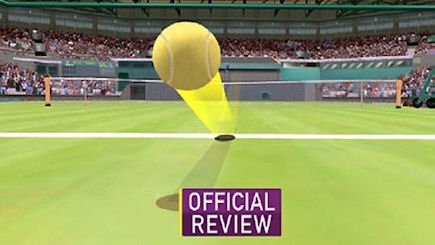This article first appeared in the Sep/Oct 2013 issue of World Gaming magazine.
A wise man once told me change is good. I would argue that change for the sake of change isn’t smart but what happens when new technology can only change things for the better? We take a look at which sports have successfully embraced technology and which continue to lag behind the times.

It might be a tired cliché but there is no doubt sport across the globe is big business these days. With players and teams worth many millions, billion dollar television deals and sports betting becoming an accepted pastime across the globe, there are plenty of reasons sport must embrace certain changes. And no change has been as widely debated as the introduction of video replays to assist referees and umpires.
There is a long list of old school sports reporters and traditionalist fans who are against using recorded vision to clarify a difficult decision. These detractors of technology claim the sport existed just fine before we began reverting to the video, so why fix what ain’t broke? But like anything, sport must move with the times – and times are changing.
The first point that must be made is that even video replays are not an exact science. The role of the video replay is to improve decision making rather than trying to achieve the impossible task of perfection. The objective of a video referee is to shed light on a close call but even with the benefit of a replay, some calls are so close they are subjective no matter how many replays and camera angles are available for review. And as long as there are rules in place to deal with these subjective decisions there shouldn’t be too many problems. Arguments? Yes. Conjecture? Sure. But these have always been part of sport and are largely unavoidable.
It’s also important to point out that video adjudicators can make mistakes too; after all, they are human just like the rest of us. There are some sports where technology can provide a categorical decision but others where even the advent of technology can’t always provide a definitive answer. Technology will improve over time, because that’s what technology does, but there will always be some decisions that remain open to conjecture.
Let’s have a look at some of the world’s most popular sports and what they are doing, or not doing, when it comes to video technology.
The Good
Tennis
In my opinion, tennis leads the way in its use of video replays. It is blessed in many ways because the Hawk-Eye technology that tracks the path of the ball is millimeter perfect and the evidence is there for all to see. Tennis also has the benefit of a small and stable playing arena which is perfect for video interpretation because all the cameras are set in fixed locations. It is always harder when cameras have to move around like they do in the majority of the world’s football codes.
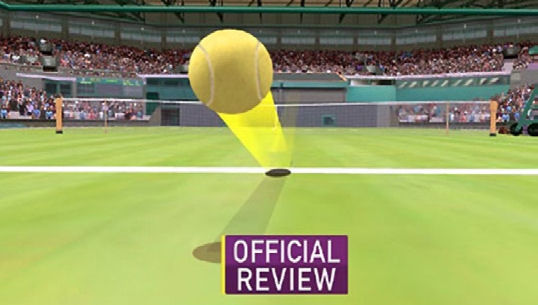
An example of tennis’ Hawk-Eye technology
The current rules allow for each player to challenge the decision if they believe a linesperson has made an incorrect call. If they challenge three times unsuccessfully in any one set, they have no more challenges available until the next set. In the event of a tie-breaker both players get one more challenge, and players get three more challenges after every 12 games of a fifth set without tie-breakers. However, they don’t lose a challenge if their challenge is successful, so provided their challenges are all correct they essentially have an unlimited supply. The beauty of the “three strikes and you’re out” rule is that it has stopped the over use of challenges which would inevitably have slowed down the game. In tennis, video decisions are made quickly and have even added an extra element of excitement as the players and fans watch to see where the ball really landed. It makes you wonder whether John McEnroe would have been the “super brat” he was if he wasn’t able to complain about so many line calls! Some players (Roger Federer being the most prominent) struggle with making challenges at the right time, but it is now such a widely accepted part of the game that most have easily adapted.
American Football
The National Football League (NFL) can be credited as front-runners in the use of video referees. This is the most complex sport in the world and therefore the hardest to adjudicate. There are a myriad of decisions in every game that are highly technical and even though the officials are the best in the business, they still make mistakes.
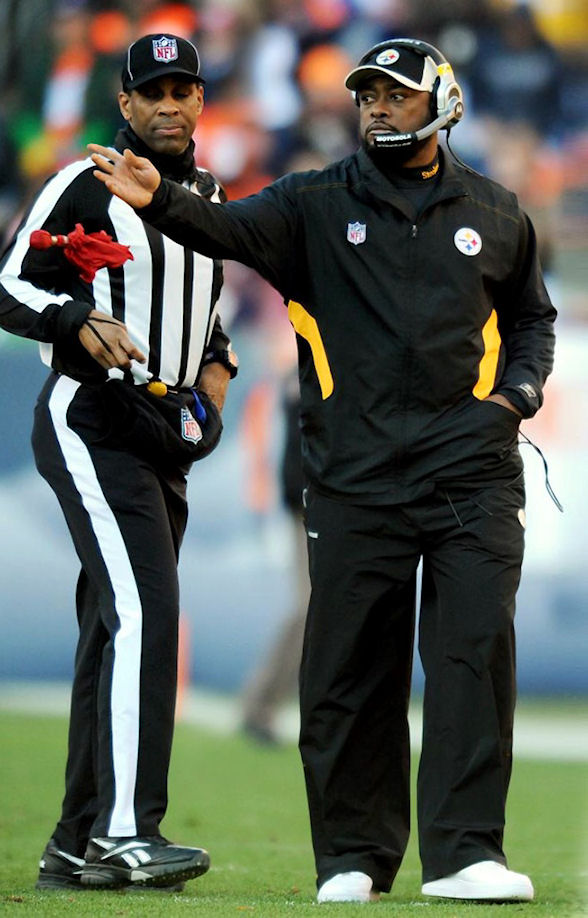
The NFL has long been at the forefront of implementing technology to aid decision making
In American Football, coaches have a red flag they can throw out onto the field when they want to challenge a decision. Like tennis, they have a limited number of challenges (two to start the game and a third if they use both challenges successfully) and are punished by losing a valuable “time out” if their challenge is found to be unsubstantiated. Unless there is compelling evidence stating that the decision made on the field is incorrect, the decision will stand. In the last two minutes of each half the on-field referee may use video referral for any decision they see fit to review. Mistakes happen but in a game as complex as this it is testament to the video referee that they now get so many decisions right.
Rugby League
Rugby league is a great example of a sport that was struggling with the use of the video referee, but after reviewing their processes it seems the National Rugby League (NRL) has just about found the right balance between the on-field referees and the video referees sitting high in the grandstands.
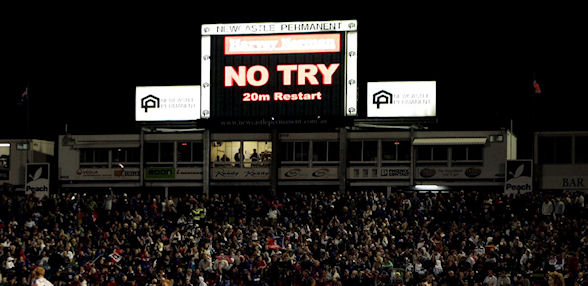
Video referees are now an accepted part of rugby league with the NRL having developed a system that usually works very well
Because there are usually a number of players involved in making a tackle, it can often be difficult for the cameras to see the football if it is caught underneath a pile of bodies which meant that under the old rules the video referee would often refer the decision back to the on-field referee rather than making a definitive decision himself.
This was a shambles. The new rules demand that the on-field referee give an opinion – either “try” or “no try” when he refers the decision to the video. The video referee must then provide the same decision as the on-field referee unless he can find clear evidence that the on-field referee is wrong. This has worked very well and congratulations to the NRL for tinkering with their system until they got it right.
The Bad
Cricket
Cricket is another very technical sport. It has a rich tradition of umpires that have done an incredible job over the course of almost 200 years. There wouldn’t be any other sport in the world where so many officials are as well known as the players.
Thanks largely to the television networks and particularly Channel 9 in Australia, cricket has devised video technology that works extremely well. The problem is that they won’t use most of it unless both teams agree to do so prior to the series of games being played. And while most countries are happy to do so, the most powerful cricketing nation on the planet, India, refuses to. This is one of the most ludicrous displays of a sporting governing body – the International Cricket Council (ICC) – bending to the requests of its main cash cow – the Board for Cricket Control in India (BCCI) – I have ever witnessed. This sport should be in the “good” section but because there are those that prefer to bury their heads in the sand there is no consistency in the implementation of technology across the globe.
Rugby Union and Australian Rules Football
Both of these sports are trying to develop video referrals to improve their game. Both have a number of problems they need to address, as the success rates of their current systems are problematic at best.
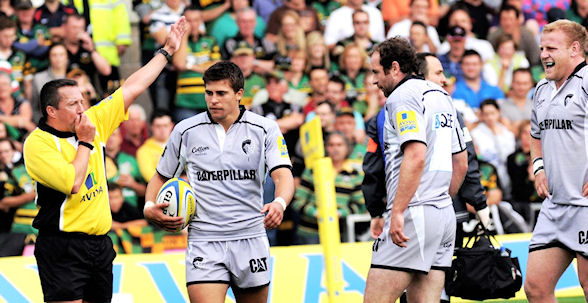
Rugby Union is still fine-tuning its video refereeing systems
Let’s hope both of these sports continue to work at improving what they have and don’t throw problems in the “too hard” basket or even worse – go back to no video referee at all!
The Ugly
Football
The biggest sport in the world refuses to move with the times and embrace technology. I have said it before and I will say it again; just wait until a World Cup Final is decided by a wrong decision – there will be hell to pay! Perhaps FIFA would finally be forced to make a change. It’s just a shame we have to potentially wait for this to happen to make powerbrokers wake up and do something about it.
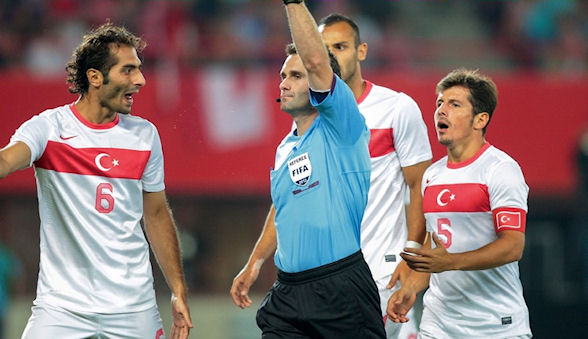
Football continues to resist the use of technology
Even if FIFA doesn’t implement technology to adjudicate on off side (which they should), they must use it to adjudicate on whether or not the ball has crossed the goal line. FIFA hides behind the argument that they want every game of football adjudicated exactly the same anywhere in the world and at any level. This is a pathetic argument. We’ve seen time and time again match officials getting it wrong when it comes to the ball crossing the goal line and each time it happens is another black eye for the game. The good news is the English Premier League has finally voted to implement Hawk-Eye technology ahead of the 2013/14 season but FIFA continues to resist. It’s a travesty that the “world game” happens to be the sport most guilty of letting common sense fall by the wayside.

